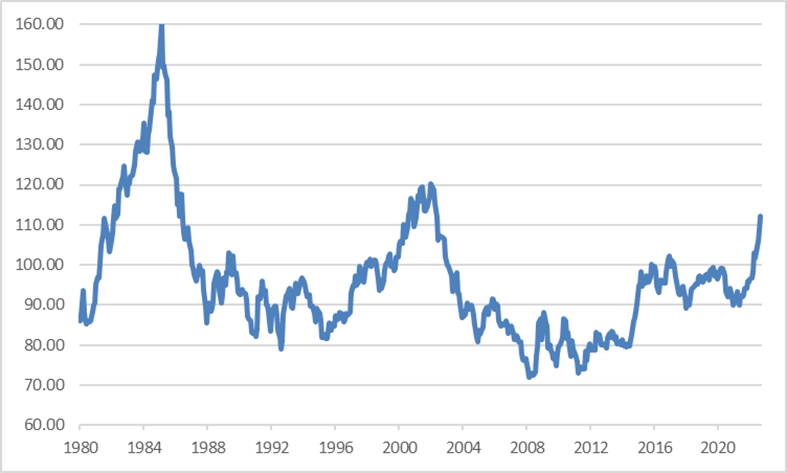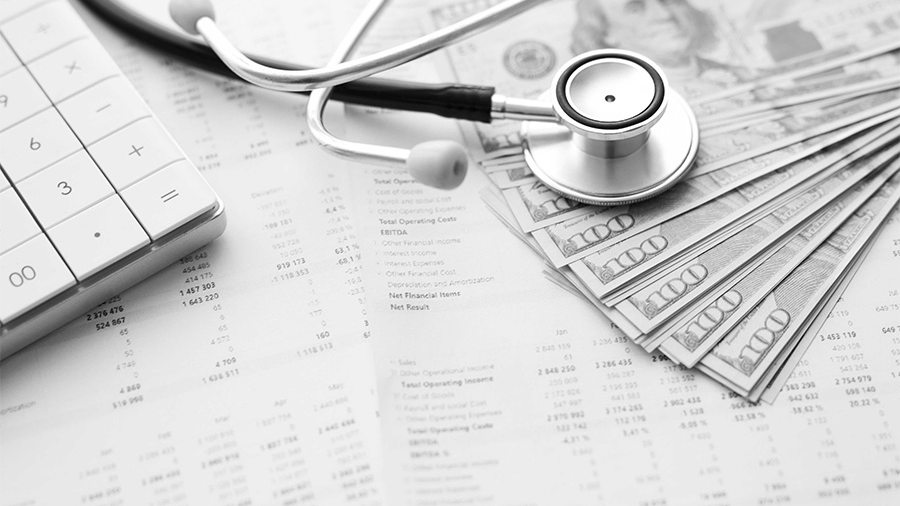
Not-for-profit healthcare issuance remains light across public and private funding channels. Uncertainty about the depth and breadth of capital access options persists but the main headwind remains credit challenges. Kaufman Hall’s most recent National Hospital Flash Report hinted at modest improvement, but the environment continues to showcase strained margins and deep uncertainty on performance direction and momentum.
|
1 Year |
5 Year |
10 Year |
30 Year |
|
|
Oct 7—UST |
4.25% |
4.15% |
3.89% |
3.85% |
|
v. Sep 23 |
+12 bps |
+17 bps |
+19 bps |
+24 bps |
|
Oct 7 – MMD* |
2.95% |
3.02% |
3.18% |
3.76% |
|
v. Sep 23 |
+8 bps |
+7 bps |
+7 bps |
+3 bps |
|
Oct 7—MMD/UST |
69.4% |
72.8% |
81.7% |
97.7% |
|
v. Sep 23 |
-0.1% |
-1.3% |
-2.3% |
-5.7% |
|
*Note: MMD assumes 5.00% coupon |
||||
SIFMA reset this week at 2.45%, which is approximately 74% of 1-Month LIBOR and represents a 49 basis point adjustment versus the September 21, 2022, reset.
It’s the Fed’s World and We’re All Just Living in It
Starting in 2008 the Federal Reserve partnered with the federal government to flood the world with dollars and, in doing so, took on the role of chief party planner for global financial markets. To riff on Cyndi Lauper, markets just want to have fun—but the Fed is turning into a great big bummer.
One group that must be griping the loudest is all those foreign central bankers and finance ministers who are trying to manage their economies and currencies in a world awash in dollars. Over the course of 2022 the U.S. dollar has appreciated sharply versus other currencies. As an example, the DXY Index measures the U.S. dollar against a basket of currencies that includes the euro, Japanese yen, British pound, Canadian dollar, Swedish krona, and Swiss franc. On September 30, 2022, the DXY was at 112.12, which is up over 17% from its level on December 31, 2021. The below chart measures a longer horizon—from 1980 to present—and demonstrates that while the dollar has strengthened significantly since 2008, it remains below historic highs and well below the appreciation posted in the mid-1980s.

But this time seems different. In the 1980s, dollar appreciation emerged from the combination of high U.S. rates and fiscal-regulatory stimulus (the Reagan tax reform and effective rate cuts). The dollar’s 2022 performance has been attributed to two factors:
- The Fed has pushed up dollar-denominated interest rates faster than other central banks. The British and European central banks have been tightening at a slower pace and it seems they might be inclined to do even less if the Fed were not so hawkish. Conversely, Japan has held rates constant (and intervened in currency markets to defend the yen) and China (which does not allow its currency to freely float) has even reduced rates.
- Despite less than stellar U.S. economic performance and a wacky political environment, the U.S. remains a haven. The Euro Zone is confronting significant inflation combined with major geopolitical disruption via the Russia-Ukraine war that is likely to translate into very strained economic performance. For all our problems, the dollar is getting support partly because the U.S. is still perceived as the best place to park financial assets during this time of widespread and varied global stress—we are the best of a lousy set of options.
I find all this fascinating, but does it matter to not-for-profit healthcare? A strong dollar makes foreign stuff cheap—it is a great time to buy imported goods or travel abroad. But it’s an equally rough time to be an exporter or if you’re hoping that foreign visitors will show up at your store. Given that healthcare is largely a domestic sub-economy, the performance of the dollar won’t impact sector earnings. Where the dollar does matter is as another indicator of potential balance sheet headwinds:
- Part of the current appreciation reflects our central bank adopting a more aggressive rate posture than others, which means disruptions in the cost and access to external capital.
- Appreciation also means that U.S. multi-national companies may face earnings pressures (from selling exports or converting foreign sales back into dollars), which may increase investment portfolio volatility.
- The dollar is a proxy for global risk—its strength reflects the risk of global recession. But a rapidly appreciating dollar goes beyond creating risk to produce the real-time impact of rapidly escalating debt burdens for emerging market creditors (who pay debt service in dollars). Recession and payment pressures usually lead to defaults and write-offs, which inevitably further constrain investment performance and the availability and cost of risk capital.
Today’s strong dollar doesn’t feel like Ronald Reagan’s “morning in America”; instead, it seems more like a canary in the coal mine around global financial and political stability. Some voices are suggesting the Fed is going too far too fast, and that the financial system is starting to crack. Theoretically, when the financial system cracks the Fed would shift into liquidity mode—which would mean more dollars, more inflationary pressures, and uncertain growth (the liquidity would be to contain risk rather than fuel growth). It is a set of difficult choices, but for now the Fed is prioritizing U.S. price stability.
The period from the mid-1960s to early 1980s is referred to as the “great inflation” and perhaps the 2020s will come to be known as part of the “great liquidity unwind.” No one knows how long this unwind will take, how exactly it will play out, or whether the Fed has the stomach to do the full job, but no one in healthcare should doubt that it will be very difficult to generate resources in a de-liquifying and de-levering world. This means that the 2020s for healthcare leaders must be the era of “great resource allocation,” which will require excellence in both resource generation (across operations and balance sheets) and appropriately positioning those resources on the resiliency-to-return continuum.





